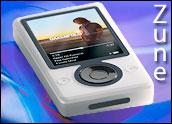
Microsoft’s much-anticipated Vista operating system became available to consumers this week, and, as with many new technologies, the excitement was tempered by an atmosphere of caution.
So, Vista is finally here. Now what?
Major Upgrade
Because Vista is the first major upgrade to Microsoft’s operating system since the release of Windows XP in October 2001, and because Redmond has invested US$6 billion and written over 50 million lines of code to develop the product, there is a lot riding on its success.
Microsoft is calling Vista the most significant operating system since Windows 95, which was released more than 11 years ago, but whether the OS will be equally important to consumers remains to be seen.
Worth the Price?
The first question many computer users seem to be asking now is whether it is worth upgrading to Vista with their current hardware.
“That really depends if the hardware is two years old or newer,” Laura DiDio, an analyst with the Yankee Group, told TechNewsWorld.
“The price of hardware has declined so rapidly over the past several years that we are now paying half the price for a PC or a laptop and getting twice the power on standard configurations,” she noted, adding that the Vista upgrade is “probably not worth it if you have really old hardware.”
Operating Systems Included
Over the past four years, the number of U.S. households that purchased a PC in the previous year rose from 16.4 million in 2001 to more than 26 million in 2005, according to Forrester Research.
That means more than one-third of computer-owning households bought their last PC in 2002 or earlier and are currently working on machines that are barely sufficient to run Windows XP.
“These PCs have scarcely enough hard disc capacity to handle temporary Internet files and e-mail attachments, let alone digital music or videos,” said Ted Schadler, a Forrester analyst and co-author of the report.
Instead of upgrading, predicts Schadler, most consumers will likely continue to do what they have been doing for years: Buy computers when the old ones break or when the prices come down far enough. “And that means the best predictor of Windows Vista adoption is Windows XP adoption,” he told TechNewsWorld.
Minimum Requirements
The basic Vista requirements are 512 MB of RAM, an 800 MHz CPU (central processing unit), and a hard drive with 20 GB of free space. However, that level won’t permit much in the way of Vista bells and whistles.
“You’re not going to get much there,” acknowledged DiDio.
Still, the ultimate cost — from zero to a few hundred dollars — really depends on what consumers are looking for from the operating system, she said.
“If I was some 10 or 15-year-old who played a lot of games,” said DiDio, “I’m going to want a state of the art sound card and video card.
Senior citizens often want those same cards to zip pictures of their grandchildren back and forth to friends, she added.
If users are only going to write letters and send e-mail, they might want to stay away from Vista Premium and enter the market at the basic level, DiDio suggested.
Microsoft is also tossing out advice. The software giant has posted on its Web site a Vista Upgrade Advisor program, which will analyze current systems and let users know if their hardware, programs and drivers are compatible with Vista.
Keeping Resellers Happy
Many PC vendors see Vista’s consumer launch as a huge opportunity to move more of their machines and upsell their own feature sets.
“There are a lot of promotions with this,” DiDio said, “and Microsoft has done a very good job keeping reseller partners happy.”
On Monday, Dell opened a Web site with advice for consumers looking for the best PC to support the different platforms — Vista Home Basic, Home Premium and Ultimate.
Gateway, Hewlett-Packard,Lenovo and others have also moved in on the action and are trying to get consumers to buy new machines with Vista instead of upgrading on their old ones.




















































